
Back to Loco of the Month homepage
Back to Sidestreet Bannerworks
.
March 2010
LBSC's "Sir Morris de Cowley"
by Marc Horovitz

The work of LBSC ("Curly" Lawrence), the legendary British model-locomotive designer, has appeared many times in these pages. The engine presented here is, arguably, one of his most interesting. It is a 4-6-2 tender engine in 0 scale in the style of a Southern Railway locomotive. It was initially published in Model Engineer magazine in 1926. Curly's own example of the model would haul passengers! I recall reading somewhere that the name, Sir Morris de Cowley, was derived from the Morris Cowley automobile, but I do not recall the connections. Perhaps someone can help me out on that one.
The model
The model in question was built around 1935, according to a slip of paper that came with it, by a builder unknown. The paper says:
Sir Morris de Cowley. 4-6-2 Coal Fired, Steam Loco designed by 'LBSC' and built by ---- about 1935.
The builder's name was neatly clipped out -- infuriating! The paper goes on to explain, in minuscule handwriting, the workings of the locomotive, which has evidently never been fired.
Although designed as an 0-scale locomotive, this particular model has had its proportions changed slightly. The cab has been lengthened and the height of the tender has been brought down a little, giving the locomotive more of the look of the 15"-gauge locomotives that run on the Romney, Hythe & Dymchurch Railway. So, the scale could be construed as either 0-scale (if the model is taken as that of a standard-gauge engine) or 1" scale (if interpreted as a 15"-gauge loco).
This engine is beautifully, though plainly, made. It has a slide-off cab roof, revealing a fully fitted backhead, including everything anyone could wish for: a pressure gauge (with a hand-lettered dial!), a pull-out-type regulator, a whistle valve (the large whistle is concealed between the frames, under the boiler), a water glass with a blowdown, and a blower valve. A pair of tiny safeties ride atop the boiler and there's a clack valve on either side of the boiler, just aft of the smokebox. One is plumbed into the engine's tender pump while the other is connected to the axle pump, driven off the middle axle. A bypass valve stands on the footplate.
The smokebox door opens with a proper dart, revealing the usual smokebox plumbing. Behind this is a locomotive type, coal-fired boiler with five flues and a larger superheater flue. A high firebox door resides on the backhead to maximize the depth of the fire. There's a miniature coal grate above the trailing truck.
Valve gear is Baker. The is one of the very few models of this size (or even larger) that I've ever seen with Baker gear. The gear is controlled by a nicely made reversing quadrant on the right-hand floor of the cab.
As mentioned above, this locomotive has never been run since it was constructed, 75 years ago. This brings up a philosophical question. Should the engine be left in its pristine, virginal condition or should if be fired up as was intended, at least by its designer, if not its builder. My inclination is toward the former, so I'll not be firing the locomotive. However, I did put some compressed air to it. It runs beautifully.
|
|
|
| Builder | Unknown (UK) |
| Date built | Unknown -- likely mid 1930s |
| Gauge | 0 gauge |
| Scale | 0 scale or 1" scale, depending (see text) |
| Boiler | Locomotive type |
| Fittings | Safety valves (2), pull-out throttle, water glass, blower, blowdown, whistle, pressure gauge, tender pump; axle pump |
| Fuel | Coal |
| Blow-off pressure | 60 psi (estimated) |
| Cylinders | Two, double-acting D-valve |
| Reversing gear | Baker |
| Lubricator | Displacement |
| Weight | 8 pounds, 2 ounces (loco and tender) |
| Dimensions | Length over end beams, 22-3/4"; width, 2-5/8"; height, 4" |
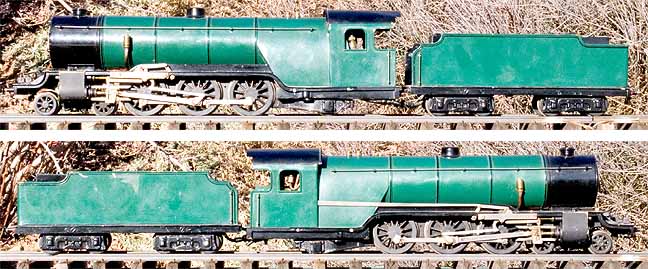
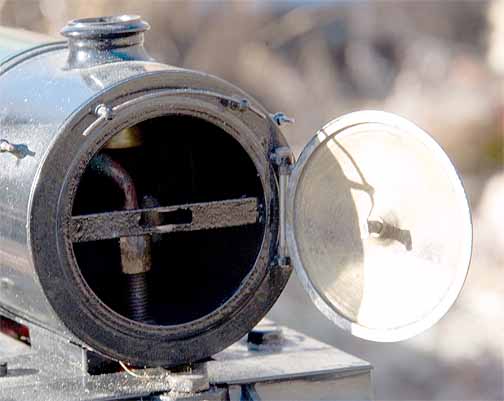


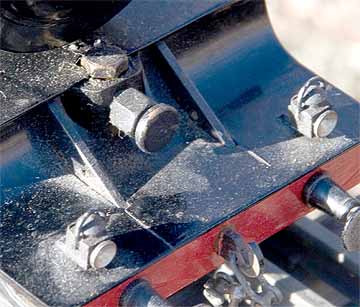


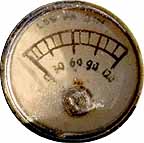

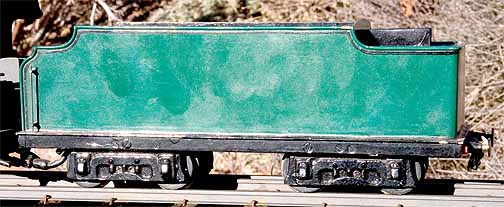


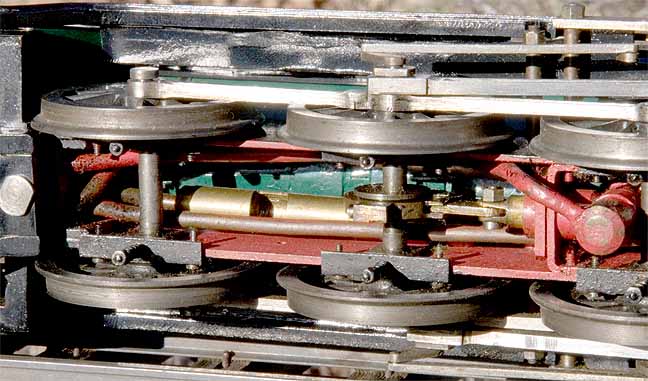
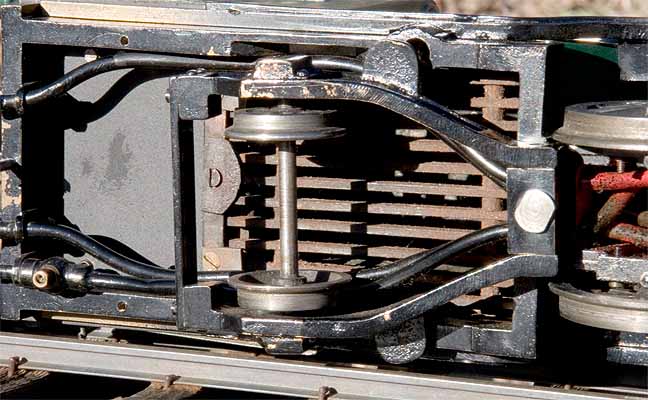
Back to Sidestreet Bannerworks home page
This page and its contents
Copyright Sidestreet Bannerworks, 2010
.